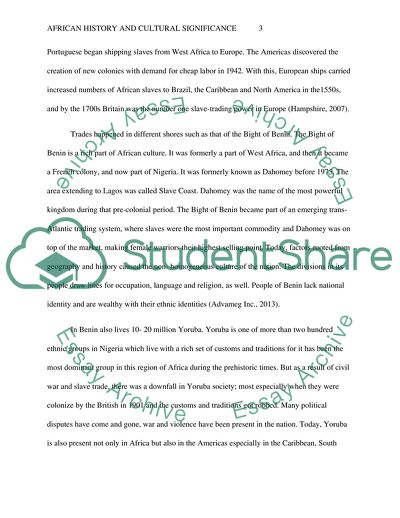Cite this document
(African History and Cultural Significance of Yoruba and Akan Groups Essay Example | Topics and Well Written Essays - 2500 words - 1, n.d.)
African History and Cultural Significance of Yoruba and Akan Groups Essay Example | Topics and Well Written Essays - 2500 words - 1. https://studentshare.org/history/1799175-analytical-response
African History and Cultural Significance of Yoruba and Akan Groups Essay Example | Topics and Well Written Essays - 2500 words - 1. https://studentshare.org/history/1799175-analytical-response
(African History and Cultural Significance of Yoruba and Akan Groups Essay Example | Topics and Well Written Essays - 2500 Words - 1)
African History and Cultural Significance of Yoruba and Akan Groups Essay Example | Topics and Well Written Essays - 2500 Words - 1. https://studentshare.org/history/1799175-analytical-response.
African History and Cultural Significance of Yoruba and Akan Groups Essay Example | Topics and Well Written Essays - 2500 Words - 1. https://studentshare.org/history/1799175-analytical-response.
“African History and Cultural Significance of Yoruba and Akan Groups Essay Example | Topics and Well Written Essays - 2500 Words - 1”. https://studentshare.org/history/1799175-analytical-response.


